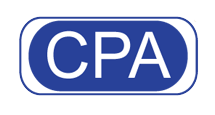01 Aug
In July 2017, the Financial Accounting Standards Board (“FASB”) finalized Accounting Standards Update (“ASU”) 2017-11. This guidance simplifies the accounting for financial instruments with down-round price protection features (also known as full ratchet anti-dilution protection).
An instrument with down-round protection requires the Company to lower the strike price on the instrument if they issue securities in the future at a lower price. Previously this type of language in a financial instrument, such as a convertible debt agreement or a warrant, caused the instrument to require liability classification under Accounting Standards Codification (“ASC”) 815 Derivatives and Hedging. See my blog dated December 21, 2016, for additional information about the accounting for these instruments before and after the adoption of ASU 2017-11.
ASU 2017-11 is effective for public companies for fiscal years beginning after December 15, 2018, and interim periods within those fiscal years. It is effective for non-public companies beginning after December 15, 2019, and interim periods within fiscal years beginning after December 15, 2020. All companies may choose to early adopt the standard, even in an interim period.
Why would a company want to consider early adopting the standard?
- It is expected that many freestanding financial instruments, such as warrants, may be classified as equity, rather than liabilities, on the balance sheet. This assumes there are no other provisions that would cause the instrument to require liability classification.
- It is possible that certain conversion features embedded in convertible debt agreements will no longer have to be bifurcated from the debt and recorded as a liability at fair value.
- There may be less volatility in future earnings if management no longer has to mark the instruments to fair value each reporting period.
- Expected cost savings since estimating the fair value of financial instruments each reporting period often requires the assistance of a valuation professional.
Final Note
Companies with financial instruments that are currently recorded as liabilities due solely to the existence of a down-round provision may want to consider early adopting ASU 2017-11. However, management should review the documents carefully to make sure there are no other terms or conditions in the agreements that would preclude equity classification under ASC 815. Our next blog post will consider some of the complexities of adopting ASU 2017-11.



